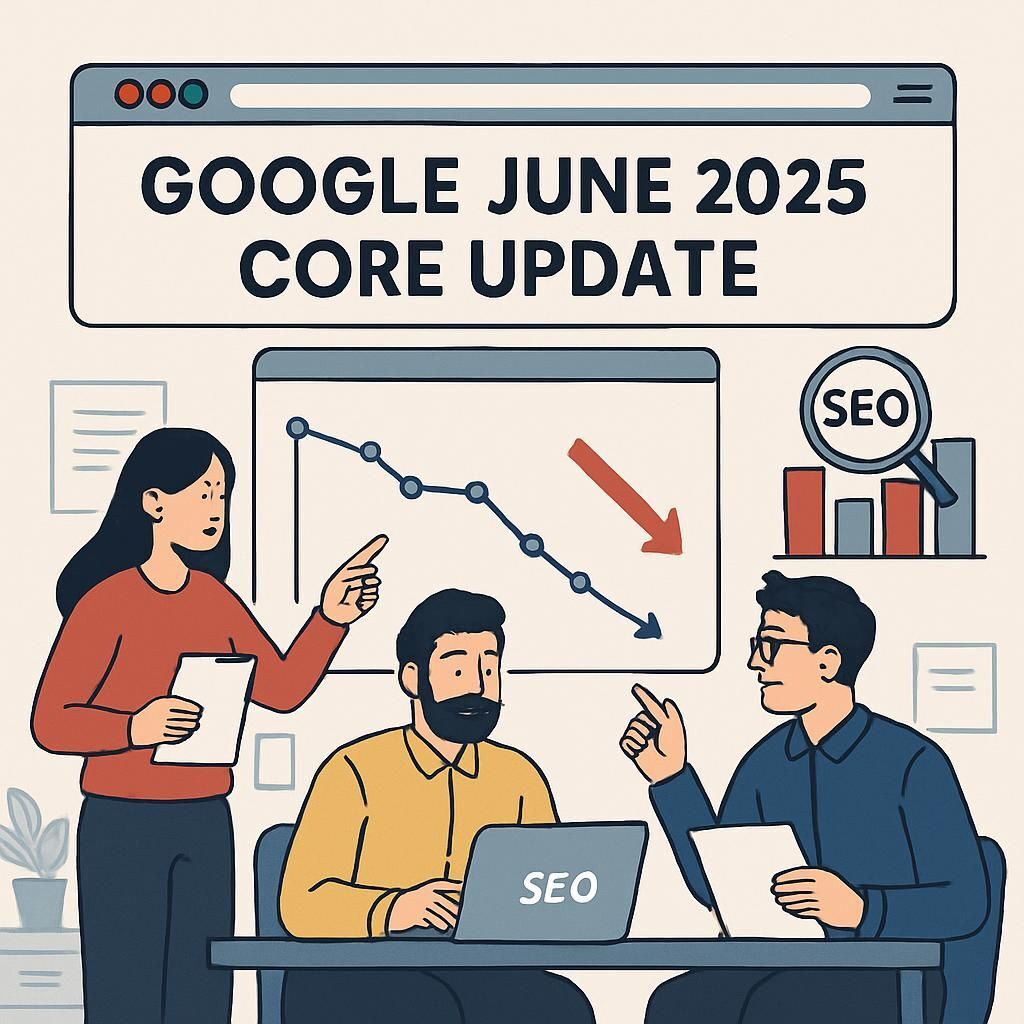The recently launched Google June 2025 Core Update has stirred significant attention among digital marketers and SEO specialists. Released on June 30, 2025, and completed in mid-July, this update has reshaped search engine strategies globally. Unlike other core updates, June 2025 highlights extensive changes across sectors, prompting industry-wide adaptations.

Key innovations such as MUVERA and the Graph Foundation Model have crucial roles in altering the evaluation of content quality and trust online. These enhancements challenge traditional techniques, prioritizing user satisfaction and relevance over manipulative optimization tactics. Furthermore, changes in AI-driven features and zero-click search results have shifted expectations on traffic outcomes, impacting long-held SEO assumptions. This evolving landscape demands a deeper understanding of Google’s mechanisms to maintain search visibility amidst ongoing volatility.
Google’s June 2025 Update Chaos: Timeline, Scope, and Industry Impact
Key Milestones of the June 2025 Core Update Rollout
The June 2025 Core Update was officially launched by Google on June 30, ushering a 16-day unfolding period marked by high industry alertness. Regular updates on completion were offered by spokesperson Danny Sullivan, confirming its conclusion in mid-July. This timeline highlighted the seriousness and scope of anticipated changes.
SEOs and digital marketing experts encountered notable fluctuations in ranking positions during this period. Industry tools such as SEMrush, Mozcast, and Sistrix closely tracked these shifts, unveiling patterns and pinpointing sectors most impacted by the update.
Week | Notable Event | Impact |
|---|---|---|
June 30 – July 7 | Rollout Initiation | High Keyword Volatility |
July 8 – July 15 | Completion and Stabilization | Emerging Ranking Recovery Patterns |
Global Reach and Volatility Across Sectors and Regions
The global and diverse reach of the June 2025 Core Update is notable, challenging deeply rooted geographical and industry-specific optimization methods. Most affected sectors include health, finance, and legal, which experienced increased volatility due to tightened evaluations of YMYL (Your Money or Your Life) content.
U.S. & Europe: Greater volatility in health and finance.
Asia-Pacific: Notable traffic shifts in legal search queries.
General Impact: Global focus on refining content relevance and trustworthiness.
Intended Goals: Improving Search Relevance and User Satisfaction
The core objective behind Google’s June 2025 Core Update is clear: enhancing search relevance and augmenting user experience. By addressing issues of content quality and search query satisfaction, Google aims to refine its search algorithm.
This overhaul intends to aid users in getting accurate, timely, and reliable information from authoritative sources, prioritizing quality signals and reducing the visibility of superfluous content. The update is a clarion call for firms to rethink their digital strategies in tandem with Google’s evolving criteria for search excellence.
Core Technological Changes: MUVERA and Google’s Graph Foundation Model Explained
What is MUVERA? Disrupting Keyword Stuffing and Retrieval Dynamics
MUVERA, or Multi-Vector and Entity-Based Retrieval Algorithm, signifies a substantial leap in filtering capabilities. This sophisticated system precludes low-value content from reaching the ranking pipeline by scrutinizing it for genuine relevance and qualitativeness.
With MUVERA, traditional practices like keyword stuffing and superficial optimization are less effective. The retrieval precision ensures contents entering the ranking phase align with genuine user intent without dependence on superficial markers.
“`htmlGoogle’s June 2025 Core Update: Key Shifts & SEO Takeaways
MUVERA impact on keyword stuffing vs. intent-based credibility
Google’s Graph Foundation Model: Mapping Authority, Spam, and Trust
Google’s Graph Foundation Model revolutionizes the manner in which digital relationships and network authorities are mapped. By employing advanced graph neural networks, it interprets intricate links among documents, cited entities, and spam indicators.
This model enhances traditional neural frameworks by identifying credibility patterns within unseen data, emphasizing authority in structured networks and refining spam detection metrics.
How the Trust Graph Impacts Rankings: Author Credibility, Brand Signals, and Off-Page Factors
A central pillar of the update is strengthening the trust graph. This integration prioritizes off-page signals such as author credibility, consistent brand messages, and expert citations.
Improved trust signals directly influence rankings, accentuating genuine content and authoritative voices over clever algorithm manipulations, thereby fostering a more transparent search environment.
Search Ranking Shifts, AI Features, and SEO Metric Disruption After Update Chaos
Gradual SERP Changes and HCU Recovery Patterns in June 2025
The immediate effect of the June 2025 Core Update involved gradual ranking shifts rather than dramatic upheavals. Websites previously hindered by the September 2023 Helpful Content Update observed note-worthy recovery when deploying substantive quality improvements.
Sites enhancing content schema, engagement metrics, and editorial oversight showcased positive ranking fluctuations over this period, highlighting renewed opportunities.
AI Overviews, Zero-Click Searches, and Shifting Traffic Expectations
Alongside content quality considerations, AI-driven features have reshaped search result engagement. AI Overviews and zero-click results account for growing traffic estimation shifts.
Increased Prevalence: Higher instances of AI-driven summaries.
Traffic Impact: Rise in zero-click searches disrupts traditional traffic metrics.
These advancements necessitate reevaluation of SEO approaches, emphasizing engagement metrics and user engagement over pure ranking pursuits.
Surviving Ongoing Volatility: Recovery, Adaptation, and the Future of SEO in Google’s AI Era
Data-Driven Volatility: YMYL Sectors, Content Quality, and Structured Data Insights
The volatility observed post the June 2025 Core Update notably affected YMYL verticals. A concerted focus on content quality and structured data implementation emerged as crucial factors in ameliorating search-induced disruptions.
Recognizing authentic expertise via reliable structures positively impacted retention during this restless period.
Recovery Roadmap: Content Audits, Topical Clusters, and Technical SEO Priorities
For affected sites seeking recovery, tactical content audits to revise thin or outdated material are imperative. Prioritizing comprehensive topical clusters and technical optimizations ensures improved ranking and site health.
In tandem with tools like Google Search Console, vigilant performance monitoring allows for effective adaptation to search algorithm recalibrations. Proactive adjustments enable outstanding expansion potential and responsive ecosystem presence.
“`html “`Strategy | Impact on SEO |
|---|---|
Content Audits | Improves Quality and Reduces Thin Content |
Topical Clusters | Enhances Authority and Engagement |
Technical SEO | Enhances User Experience and Mobile Usability |
FAQ
What were the main features of the June 2025 Core Update? The update featured critical changes in the evaluation of content quality, enabling significant advancements with MUVERA and Google’s Graph Foundation Model.
How does MUVERA affect my website’s ranking? MUVERA’s precise filtering system prioritizes genuinely relevant content, weakening the impact of superficial keyword strategies.
Why has Google expanded its use of AI features? Google has integrated more AI features to improve search relevance and efficiency, enhancing the overall user experience by reducing clutter in search responses.

